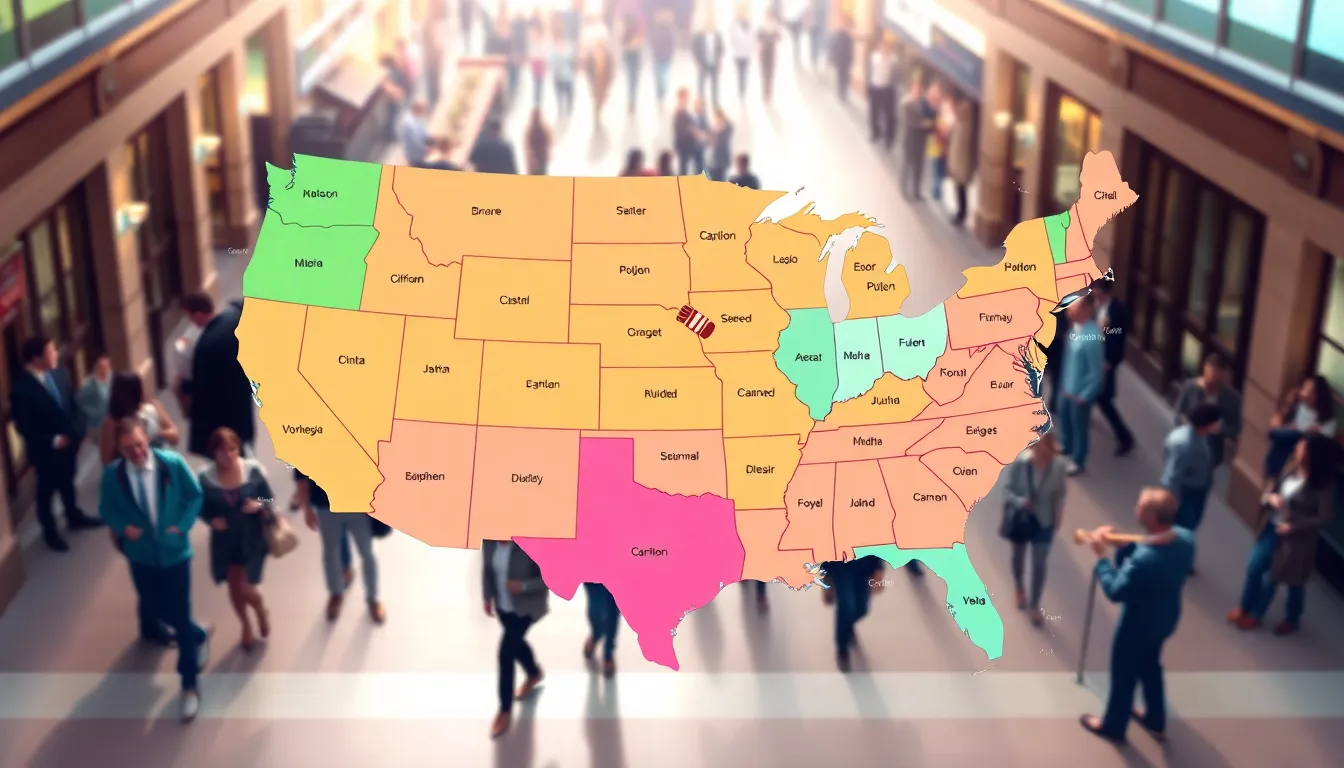Imagine trying to navigate your way across a birthday party where everyone has set up invisible walls around their cake slices. That’s kind of what political boundaries are like, often complex, sometimes messy, and hugely important. Political boundaries serve not just as lines on a map but as markers of identity, governance, and sometimes conflict. Understanding the role these boundaries play can feel like untangling a ball of yarn, but once you get it, you’ll see how it weaves into the fabric of society. Let’s jump into this intriguing topic (and hopefully avoid any cake controversies along the way).
Table of Contents
ToggleUnderstanding Political Boundaries

Political boundaries refer to the lines that define the territory of states, regions, and countries. These boundaries are not merely about maps but symbolize power, jurisdiction, and governance. They dictate where one authority ends, and another begins, affecting everything from laws and immigration to tax policies. Over time, these boundaries have evolved based on wars, treaties, and negotiations. Essentially, they are the physical manifestations of political entities and can change as mentalities and power dynamics shift. Understanding these boundaries requires looking beyond just geography: it entails examining how they influence the people and values within them.
Types of Political Boundaries
Political boundaries can be categorized into several types:
- Natural Boundaries: These follow physical features such as rivers, mountains, and lakes. For instance, the Rio Grande serves as a natural border between the United States and Mexico.
- Geometric Boundaries: Often drawn using lines of latitude and longitude, these boundaries can sometimes seem arbitrary. The boundary between the United States and Canada is a prime example, with its perfectly straight lines.
- Cultural Boundaries: These often align with different ethnic or religious groups. While they don’t conform to strict geographic lines, they significantly impact community identity.
- Political Boundaries: Designed by human decisions, these include town, city, and state lines. They can change due to political negotiations, wars, or other factors, leading to shifts in local governance and identity.
Historical Evolution of Political Boundaries
Political boundaries have a rich history, evolving alongside human civilizations. At first, many boundaries were determined organically through settlements and tribal territories. But, as empires rose and fell, political leaders began drawing lines to consolidate control.
Take, for instance, the Treaty of Westphalia in 1648, which laid the groundwork for modern nation-states. This treaty recognized the principle of state sovereignty and established borders that still influence political geography today. Fast forward to the 20th century, and global conflicts like World War I and II led to significant redrawing of boundaries, often without regard for the people living in those regions. Such historical shifts shed light on current disputes and agreements surrounding various territories.
Impact of Political Boundaries on Society
Political boundaries greatly influence society, shaping identity, culture, and political representation. They can create a sense of belonging for individuals within those borders while highlighting divisions between different groups. For instance, a community situated on the Canada-U.S. border may experience a unique blend of cultures, while also facing challenges due to differing laws and regulations on either side.
Besides, these boundaries can lead to conflicts over resources, governance, and social rights. The division of communities can sometimes pitting neighbors against each other, especially in contested areas where historically or culturally significant territories are involved. Essentially, where boundaries lie can greatly impact social cohesion, identity, and even economic opportunities.
Contemporary Issues Related to Political Boundaries
Political boundaries today are the subjects of various contemporary issues. With globalization, migration patterns have dramatically shifted, leading to increased debates over borders. Immigration policy, national security, and economic agreements all hinge on these boundaries, causing friction at times.
Also, there are modern movements advocating for the recognition of indigenous rights, calling for the redrawing of boundaries to reflect historical land claims. The debates surrounding such issues often stir emotions and can lead to protests or even violence, showcasing how deeply personal these lines can be.
Climate change poses an interesting challenge as well, with borders affecting how nations respond to environmental crises. Countries may face disputes over resource allocations, especially in areas susceptible to rising sea levels or droughts.
Future of Political Boundaries
Looking ahead, the future of political boundaries promises to be intriguing and complex. As society evolves and politics becomes increasingly intertwined with technology, these boundaries may shift both in practice and perception.
For instance, digital globalization is already challenging traditional notions of space and jurisdiction. Companies operate globally, often bypassing national boundaries completely. This creates questions about governance, taxation, and accountability that borders cannot necessarily answer.
Also, as environmental issues grow in urgency, we might see collaborations between nations to reimagine boundaries that promote sustainability and resource sharing. This evolution could redefine not just where borders lie but also what they represent in a continuously changing world.





